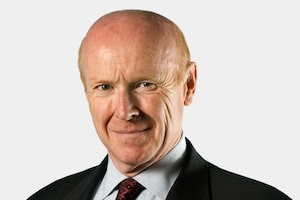Dan Richards is president of Clientinsights. He is a faculty member in the MBA program at the Rotman School at the University of Toronto.
In the investment industry, few debates are waged more intensely than that between "active" and passive" investing.
Active managers buy and sell stocks to try to outperform the market, and charge a management fee to do this . Passive investors simply try to replicate a given market at a low cost. Given the importance of the active versus passive decision, growing attention is being paid to research by two academics who have looked at active managers in a different light.
This argument really began with Princeton professor Burton Malkiel's classic 1973 text A Random Walk Down Wall Street. The book argues that the stock market is fundamentally efficient, reflecting everything that is known at a given point in time. As a result, it is futile to try to outperform the stock market - and the best way to invest in stocks is through low-cost index funds that essentially match the market's overall performance.
The majority of academics subscribe to the efficient market theory and support passive investing - but the events of the past couple of years have called into question just how efficient the stock market actually is.
Redefining the active model
In 2006, Martijn Cremers and Antti Petajisto of Yale University published a paper titled "How active is your fund manager? A new measure that predicts performance." This paper examined over 2,500 U.S. mutual funds from 1980 to 2003, looking in particular at what the authors called their "active share."
The active share of a fund is the extent to which its holdings don't overlap with the benchmark index that the fund tracks - a fund with an active share of 100 per cent would have no overlap with the index, while an active share of zero per cent would exactly track the index. You'd expect index funds to have a 0 per cent active share, but what about so-called actively managed funds?
Some of the authors' key conclusions:
In 2003, only half of self-described active funds were truly active, with an active share of 80 per cent or higher. This compares with eight out of 10 funds with a similar active share in 1980, at the beginning of the study.
As a result, the authors identified significant growth in what the industry calls "closet indexers" - funds that charge management fees for active management but closely track their index.
There is a direct correlation between true active management and performance. Funds with the highest active share outperformed their index after expenses by 1.5 per cent; the least active funds underperformed by 1.5 per cent - so there is a gap between high active and low active share funds of almost 3 per cent annually.
Size matters - smaller actively managed funds outperformed large actively managed funds.
Fees were not an indication of active share - closet indexers charged just as much as funds that were truly actively managed.
High active share doesn't mean greater volatility - the study showed that funds run by strong stock pickers had similar volatility to their benchmarks, even though their portfolios were quite different and their returns tended to be higher.
Extrapolating performance
While attending the annual meeting of the American Economics Association in Atlanta last month, I had a chance to chat with Mr. Cremers, one of the study's co-authors.
A key finding of his research that we talked about was the persistence of above average performance - he's found that as long as they have a high active share, managers who have done well in the past three years tend to do well in the next three.
He also differentiated between two types of funds with high active share. The first were run by traditional stock pickers, whose focus was on taking concentrated positions in a relatively small number of stocks, making decisions on the merits of each individual stock.
The second category were run by fund managers who made what the industry calls "factor bets" - essentially making macro judgments to rotate from one industry sector to another or in some cases to go to cash entirely.
Mr. Cremers said their research showed that as a general rule, funds focused on stock selection had better returns than those that made market timing calls, although as long as they were truly active, both tended to outperform their index after expenses.
Today, Canadians go to great lengths to ensure they get good value on major purchases. This research suggests that when it comes to selecting actively managed mutual funds, investors need to be just as diligent in ensuring they get what they pay for.
 Dan Richards
Dan Richards